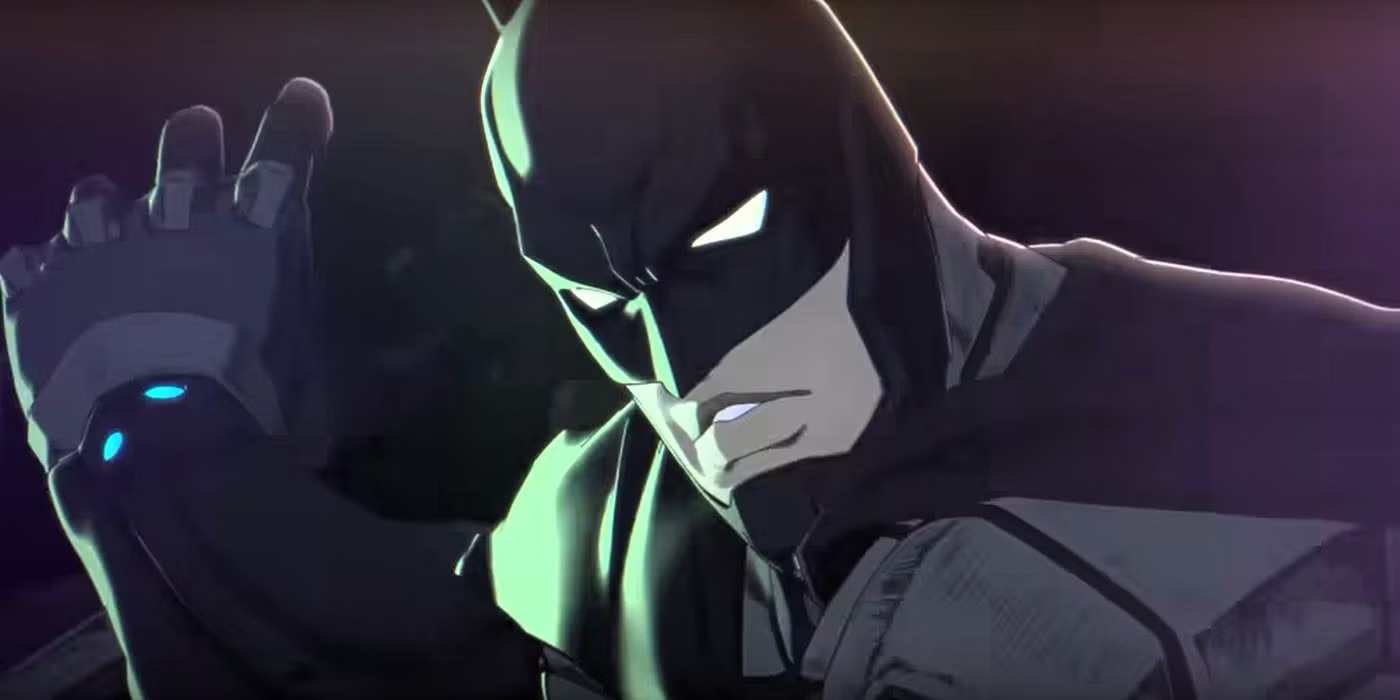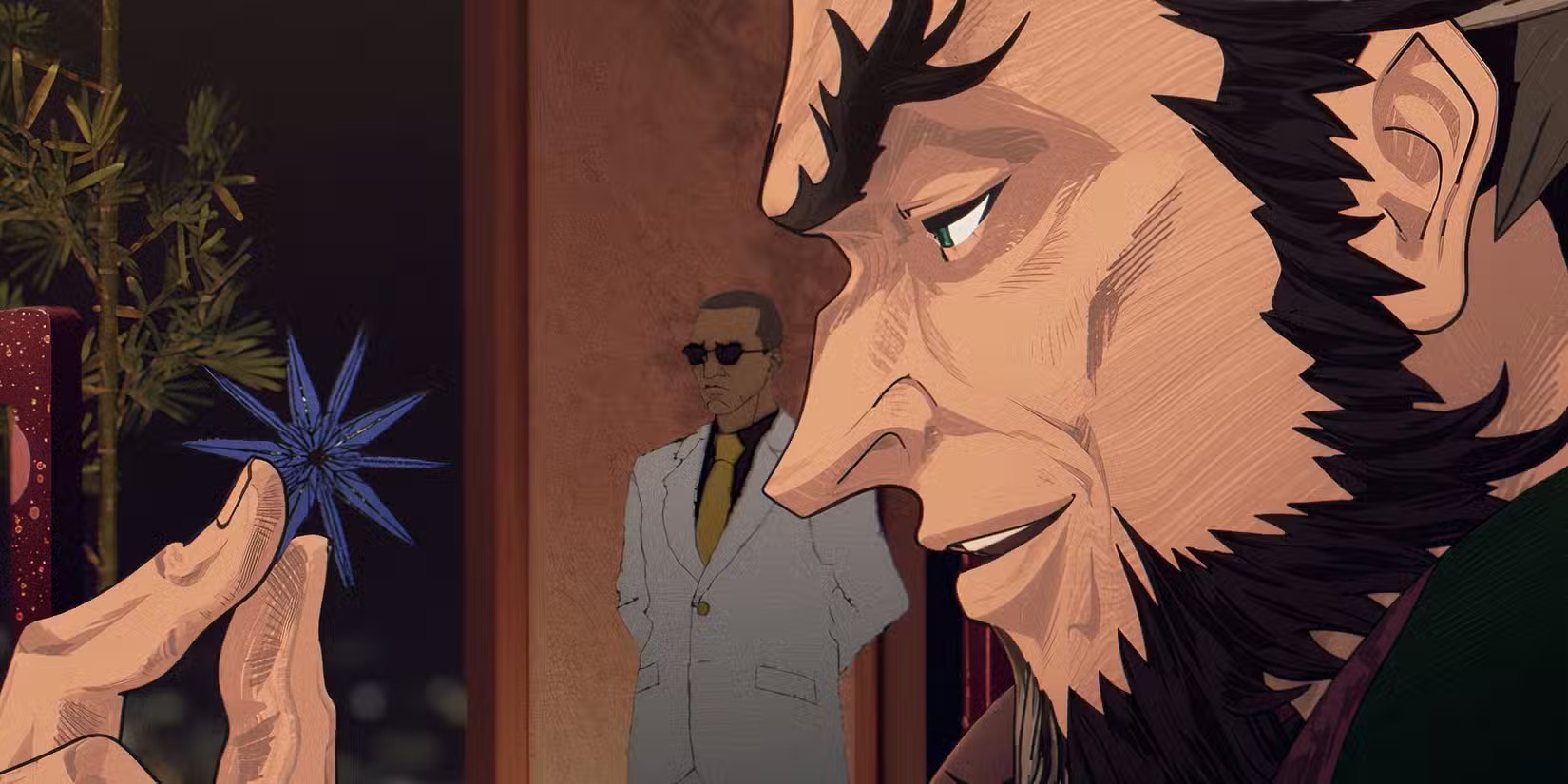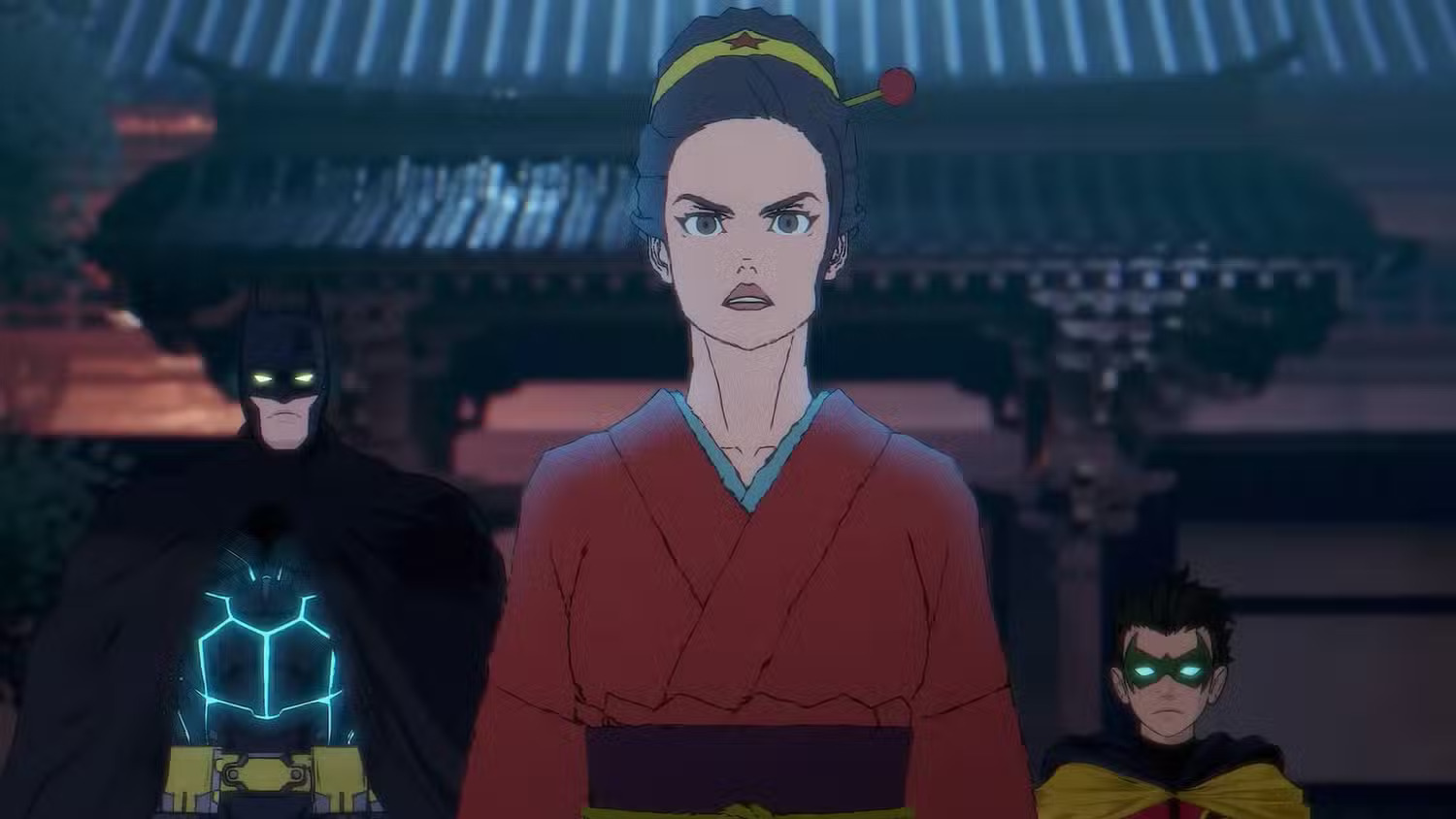Both Marvel and DC have explored the anime medium, and one of the most notable efforts from DC was Batman Ninja (2018). This film transported Batman and his allies to feudal Japan, where they fought their villainous counterparts in a unique historical setting.
The movie ended with Joker and Harley Quinn being defeated, with Batman using the Quake Engine to send them back to their original timeline. The newly released sequel, Batman Ninja vs. Yakuza League, picks up immediately after the events of the first film, introducing fresh challenges and enemies in the form of the Yakuza League.
In the sequel, Batman and his son, Damian Wayne, discover that a rift in the space-time continuum has left Japan suspended in the sky above Gotham. This event, known as “Yakuzageddon,” sees Yakuza assassins raining down upon the city. Ra’s al Ghul is revealed to be the mastermind behind this chaos.
Using the Quake Engine, he has manipulated time and space to create a new world he dubs the Fourth Dimension Origami System. Much like Wanda Maximoff’s Westview in WandaVision, Ra’s fabricates an alternate reality where he merges versions of iconic heroes to form his own Justice League.

Batman and Allies Battle Ra’s Dark Justice League to Restore Order
Ra’s al Ghul crafts his own versions of Justice League members, including Kuraku (Superman), Bari (The Flash), Zeshika (Green Lantern), and Ahsa (Aquaman). Each of these characters serves as enforcers of his new world order. However, Wonder Woman, known as Daiana Amazone in this realm, refuses to submit to Ra’s rule, standing her ground to protect her territory. Meanwhile, Ra’s attempts to recruit Damian Wayne as his successor, but the young hero resists, setting the stage for an epic showdown.
Borrowing from the JLA: Tower of Babel storyline, Batman Ninja vs. Yakuza League sees Batman employing contingency plans against Ra’s twisted Justice League. Assisted by Nightwing, Jason Todd, and Tim Drake, Batman devises intricate strategies to neutralize these formidable foes.
Flash is tricked into submission using an illusion, while Wonder Woman defeats Aquaman in battle. Nightwing, using a robotic suit and holograms, outmaneuvers Zeshika. The climactic battle between Batman and Kuraku echoes elements from The Dark Knight Returns and Batman v Superman, as Batman employs red sunlight and a Kryptonite gauntlet to weaken the corrupted Superman.
A surprising highlight of the film is Harley Quinn’s transformation into a crucial ally. Having remained in the alternate reality, she aligns with Wonder Woman and even helps the Joker rescue Batman from Kuraku’s grip. While Joker has ulterior motives, Harley demonstrates genuine heroism.
In the final confrontation, the Bat-family and their allies must work together to realign the space-time converter and restore order. The Justice League members, freed from Ra’s influence, unite to push Japan back through the rift, ensuring Gotham’s safety.

Batman’s Victory Reshapes the Multiverse, Setting the Stage for Future Conflicts
As the battle concludes, Batman successfully captures Ra’s al Ghul, while Harley plays a key role in dismantling the Quake Engine. With the crisis averted, Japan returns to its rightful reality, but the alternate realm of Hinomoto remains intact. This establishes a unique multiversal element within DC’s anime universe. With the Yakuza League freed from mental enslavement, they look toward a new future, inspired by Batman’s leadership. Meanwhile, Damian is restored to his proper timeline, marking the end of this chapter.
The ending of Batman Ninja vs. Yakuza League leaves the door open for further exploration. The Joker remains at large, and it is unclear where Harley’s allegiance will lie in the future. A possible sequel could see the return of villains like Lex Luthor or the Legion of Doom, posing fresh threats to Batman and his allies. Talia al Ghul could emerge to avenge her father, potentially rebuilding a new version of the Quake Engine. The possibility of incorporating Batwoman, Catwoman, and Batgirl could also add depth to the narrative.
A sequel could also explore the newly established world of Hinomoto, introducing original versions of classic DC villains such as Mongul, Circe, Grodd, and Darkseid. By stepping away from Batman-centric stories, DC could shine a spotlight on lesser-seen heroes, crafting an unpredictable and visually stunning anime experience.
Batman Ninja vs. Yakuza League has demonstrated the potential of a DC anime universe, blending superhero lore with Japanese aesthetics. With limitless storytelling possibilities, this unique realm is primed for further expansion.



